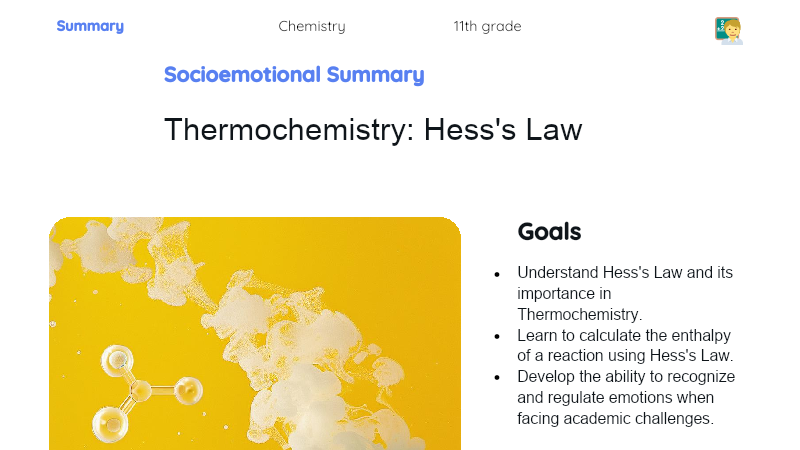Intermolecular Bonds
Relevance
- Context: Intermolecular bonds are fundamental to understanding how substances interact with each other. They are intrinsically linked to the physical properties of substances, such as their boiling point, melting point, and solubility, thus being of great importance in the study of chemistry.
- Applications: The characteristics of intermolecular bonds have numerous practical applications. For example, the effectiveness of medications is directly related to their ability to bind to specific molecules in our bodies, an interaction that depends on intermolecular bonds. The same applies to the taste and aroma of foods, which also depend on these bonds for their characteristics.
Theoretical Development
Components
-
Definition: Intermolecular bonds are the attractive forces that hold molecules together in solid and liquid states. They arise as a result of differences in electronegativity between atoms, generating an unevenly distributed electron cloud.
-
Types of Intermolecular Bonds:
- Van der Waals Forces: They are the weakest intermolecular interactions and have three subtypes: dispersion, dipole-dipole, and induced dipole.
- Hydrogen Bonding: It is a special bond that occurs when a hydrogen atom is bonded to a highly electronegative atom, creating a partially positive hydrogen charge that attracts a electronegative atom in another molecule.
Key Terms
-
Electronegativity: It is the ability of an atom to attract electrons in a chemical bond. The higher the electronegativity, the stronger the attraction force, and therefore, the greater the polarity of the bond and the molecule.
-
Dipole: It is the separation of charges in a molecule due to the difference in electronegativity between atoms. A dipole is formed, with a partially positive region and another partially negative region.
Examples and Cases
-
Van der Waals Forces Cases:
- Dispersion: Present in non-polar molecules, dispersion force arises due to rapid fluctuations in electronic distribution. Example: liquid helium.
- Dipole-Dipole: Present in polar molecules, dipole-dipole forces occur due to the attraction between the dipoles of the molecules. Example: liquid HCl.
- Induced Dipole: Present in polar and non-polar molecules, induced dipole forces occur when the presence of a dipole in a molecule polarizes the electron cloud of a neighboring molecule. Example: carbon dioxide (CO2).
-
Hydrogen Bonding Case: Present in molecules that have hydrogen directly bonded to highly electronegative atoms, such as O, N, or F. Hydrogen bonding is the reason for the high boiling and melting temperatures of substances like water, ammonia, and alcohols.
Detailed Summary
Key Points:
-
Definition of Intermolecular Bonds: Intermolecular bonds are the attractive forces that arise between molecules, keeping them together in liquid and solid states. Their strength depends on the electronegativity of the atoms involved.
-
Electronegativity and Polar Bonds: The concept of electronegativity helps understand the polarity of chemical bonds and molecules, which is crucial for the occurrence of intermolecular bonds.
-
Van der Waals Forces: Comprises three subtypes - dispersion forces, dipole-dipole forces, and induced dipole forces - each acting in different circumstances and with different intensities.
-
Hydrogen Bonding: It is a special bond that occurs when a hydrogen atom is strongly attracted to a highly electronegative atom, resulting in a remarkably strong intermolecular force.
Conclusions:
-
Importance of Intermolecular Bonds: Intermolecular bonds play a crucial role in determining the physical and chemical properties of substances, such as their melting and boiling points, solubility, and volatility.
-
Covalent Bonding and Polarity: The polarity of covalent bonds, governed by the difference in electronegativity between the atoms involved, is mainly responsible for the existence of intermolecular bonds.
-
Van der Waals Forces in Action: Van der Waals forces, especially hydrogen bonding, explain many everyday phenomena, from the adhesion between water molecules (essential for capillarity) to molecular interaction in DNA and proteins.
Exercises:
-
Identification of Van der Waals Forces: Given the chemical formula of a substance, identify the type of Van der Waals force present and explain why. (e.g., HBr, CO2, CH4, H2O).
-
Analyzing Hydrogen Bonding: For the molecules HF, NH3, and H2O, explain why only the latter forms hydrogen bonding. How does this affect intermolecular forces and, consequently, the physical properties of these substances?
-
Relationship between Intermolecular Bonds and Physical Properties: Describe how intermolecular forces affect the boiling point and solubility of a substance. Use examples of substances with different types of intermolecular bonds to support your answer.



